This is a homebrew version of the most popular audio amplifier ever designed for Technical Surveillance Countermeasures (TSCM) work.
The Kaiser 1059 Preamplifier was originally designed in January 1967 by Marty Kaiser of Martin L. Kaiser, Inc. for use by the U.S. Army Intelligence Materiel Support Office (USAIMSO). Over the years, Kaiser would go on to sell over 10,000 of these units to all sorts of domestic and foreign intelligence and military agencies.
Unfortunately, his sales to the FBI would lead to his ultimate downfall... You see, the FBI (and most other intelligence agencies) create "front companies" in order to do business with so the purchases can remain anonymous. At that time, the FBI was using "U.S. Recording Company" as one of their cut-outs. One day, while at the FBI headquarters, Marty Kaiser noticed that the U.S. Recording Company was marking up the prices of his equipment 30% on their invoices to the FBI. For example, Kaiser would sell a body transmitter to U.S. Recording Company for $150, then U.S. Recording Company would turn around and bill the FBI $195! This little scam would come to a quick halt when Marty Kaiser mentioned it during his testimony before the House Select Committee on Intelligence in 1975. The U.S. Recording Company scandal would continue to grow-and-grow, much to the embarrassment of the FBI. It turned out, of course, the people from U.S. Recording Company and the FBI were buddies and didn't like Marty Kaiser raining on their little parade.
Over the course of the next 30+ years, the FBI would engage in a series of ridiculous lawsuits, false accusations, and illegal harassment against Marty Kaiser. The FBI would essentially "blackball" Kaiser from selling his equipment to the U.S. government. His sales would fall sharply and a frivolous lawsuit filed by two FBI agents against him would nearly bankrupt his family. Oh, don't ever shop at Lowe's hardware stores again!
This whole story is covered in much more detail in Marty Kaiser's book Odyssey of an Eavesdropper: My Life in Electronic Countermeasures and My Battle Against the FBI. If that story sounds like it would make a good movie - you'd be correct! The Will Smith/Gene Hackman movie Enemy of the State is loosely based on the life of Marty Kaiser, who was a consultant on the set.
The 1059 is a multiple input/output low noise amplifier that provides a near-perfect match to just about any microphone or recorder. The 1059 includes a tone generator for testing amplifier performance and unknown lines, switchable excitation voltage for external accessories and a low pass/high pass filter selector.
The input jacks, J1 through J4, have input impedances ranging from 2 megaohms to 1,000 ohms. Maximum amplification is available through J2 and J3 and medium amplification through J4. J1 and its associated J1 Gain control has adjustable amplification. With the J1 Gain control advanced fully clockwise the output level of a signal fed into J1 will be roughly one-half that of the same signal fed into J2.
J1 can sustain approximately 1,000 volts DC. Use this jack when it is unknown how much voltage or type of signal is on a line pair. To operate the 1059, insert the special 2,000 ohm headset supplied into output jack J6. The headset is worn with the gray tube under the chin with the sound output holes facing slightly (30 degrees) forward. The 1059 is NOT designed to drive low-impedance headphones. Turn J1 Gain fully counterclockwise (minimum) and advance the Volume control clockwise (turning on the amplifier) roughly one-third turn. Advance the J1 Gain control slowly clockwise until either a signal is recovered or the control reaches full clockwise. If, while advancing J1 Gain, a loud hum is heard, it probably indicates the line is carrying high-voltage AC. USE CAUTION! Do not apply high level AC signals to any other input.
J2 (500k ohms) is a high impedance input that provides the maximum amplification of the 1059. Utilize this jack when the DC and AC level and relative signal strength on a line pair is known. J2 may also be used with external accessories such as the 1040-2 Contact Microphone and 1040-4 Hot Pack.
J3 is used when the line impedance or accessory is near 10k ohms. Utilized this jack with accessories such as the 2030 Carrier-Current Probe or when analyzing telephone systems.
J4 provides lower amplification and impedance (1,000 ohms) than J2 or J3. Use this jack when the input signal is too high in level for the other inputs. This jack also can supply an excitation voltage (9 volts through 4,700 ohms) for external accessories or carbon microphones. Voltage is applied to the jack when the J4 Volts On (red) switch is in the UP position.
The Tone - On (blue) switch powers an internal tone generator. The output of the generator is fed through the last three stages of the amplifier and applied to output jacks J5 and J6.
The Filter - In (yellow) switch selects the amplifier roll-off characteristics. Use this switch when excessive hum is encountered or a more "crisp" signal is desired.
A convenient check of the battery can be made by inserting the mini plug-clip lead cable (supplied) into J4, turning ON the 1059 power and placing the J4 Volts On switch in the UP position. Connect the clips to a voltmeter set on the 9 or 12 volt range. Replace the battery when the reading is below 7.5 volts. To change the battery, loosen the two cover screws one or two turns, slip off the cover and remove the old battery. Install a fresh alkaline battery, replace the cover being careful not to pinch the battery leads and tighten screws (don't over-tighten!).
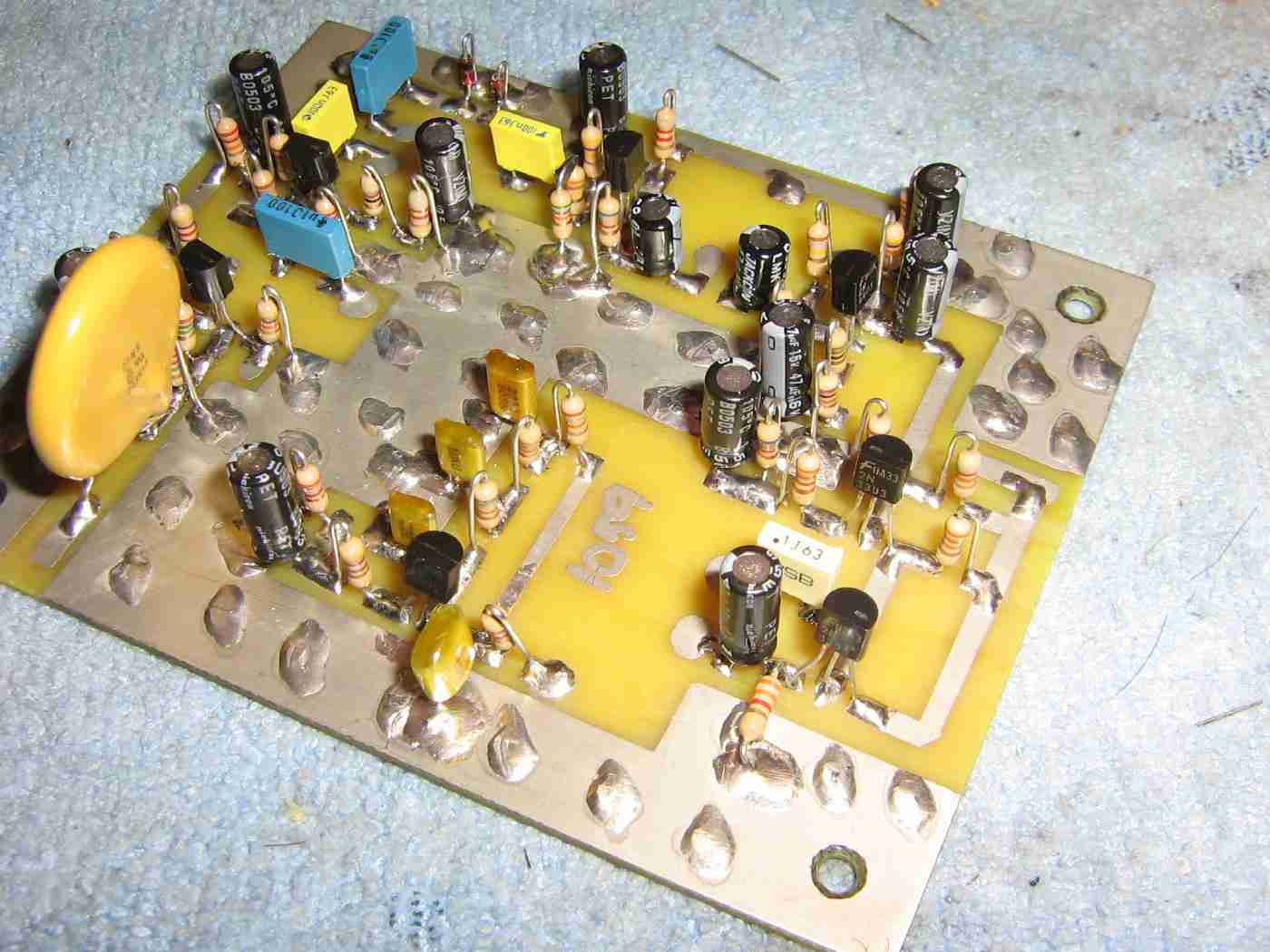
Overview of the homebrew Martin Kaiser 1059 Preamplifier circuit board.
The circuit was made using standard 1/4-watt, 5% tolerance carbom-film resistors to match the performance of the stock 1059.
The big yellow disks are high-voltage (1000V) 0.022 µF capacitors. These are required if you ever connect to an unknown line and it may contain a large bias voltage. Only the J1 and J2 input jacks are capable of handling a high voltage!
Due to the circuit's high gain, it will require using a proper PC board. Preferably a PC board with a large ground plane.
The low frequency response of the 1059 goes down to around 3 Hz. There is really no high frequency roll-off in the circuit's design, so the 1059 will operate well into the low VHF range. This may required additional circuit shielding or ferrite beads on power leads, in certain applications.
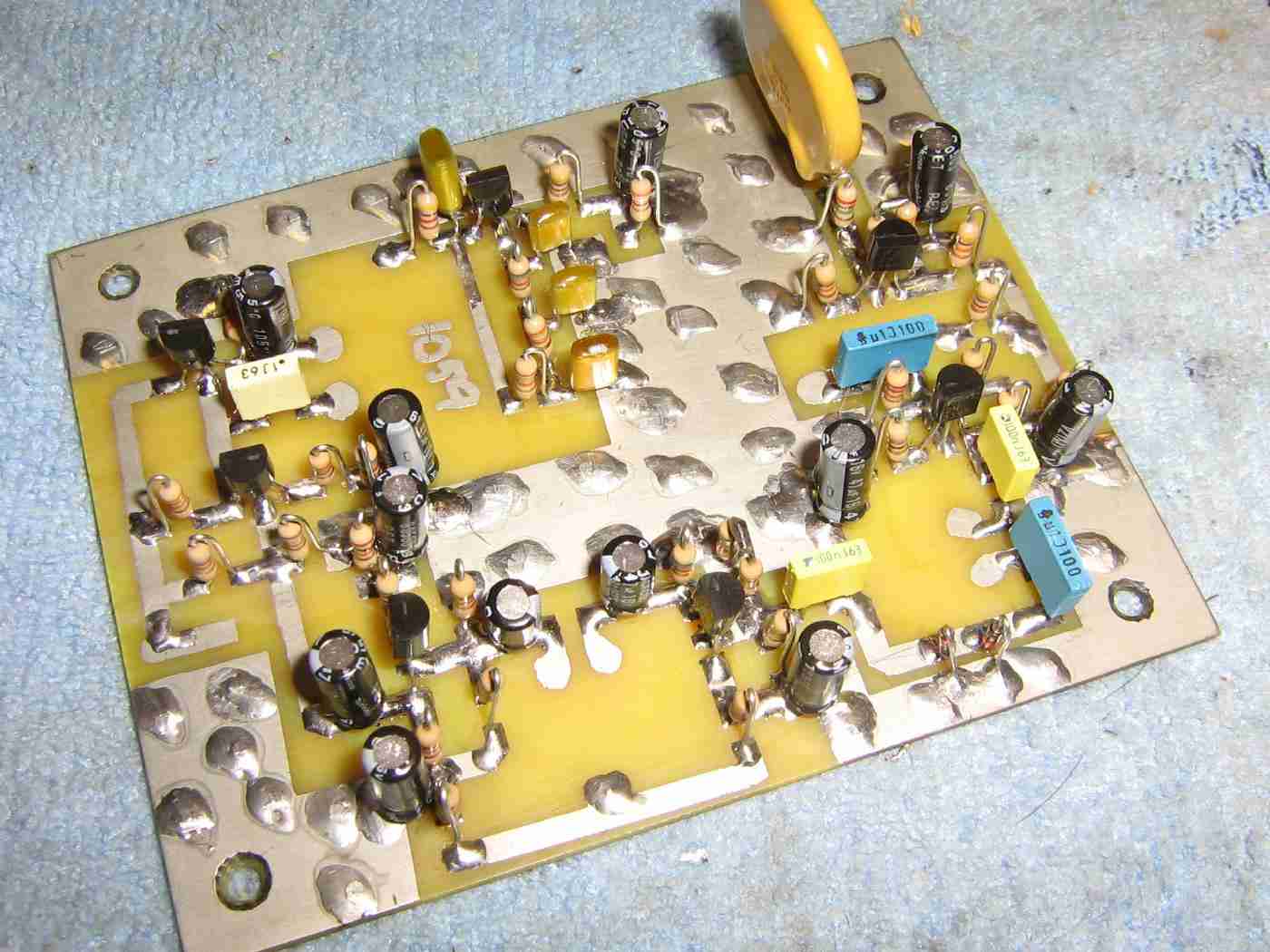
Alternate overview.
The components for the 500 Hz phase-shift tone generator are in the upper-middle section. The timing capacitors used here should be high-quality film-type.
The first transistor input stage is mostly just a high-impedance buffer, with the real gain stages following it.
A pair of back-to-back 1N4148 diodes clip any high-voltage signals or spikes which may make it past the first few transistors.
The 0.1 µF coupling capacitors after the J3 and J4 inputs should be rated for at least 100 volts.
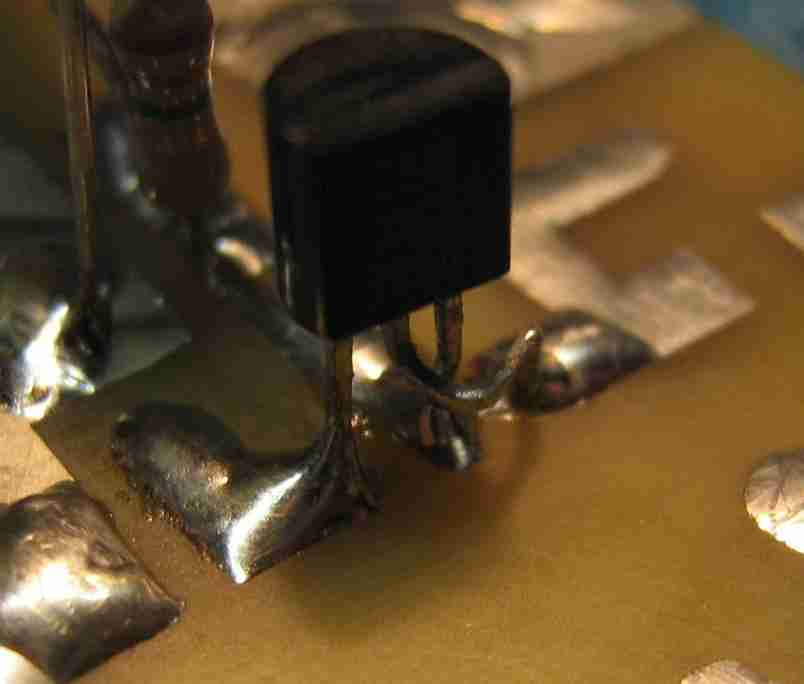
The 2N3319A and 2N3393 transistors are in a "Emitter Collector Base" configuration, which is different from the normal "Emitter Base Collector" used in common 2N3904 or 2N2222s.
Keep this in mind if you make the PC board before reading the datasheets - like I did!
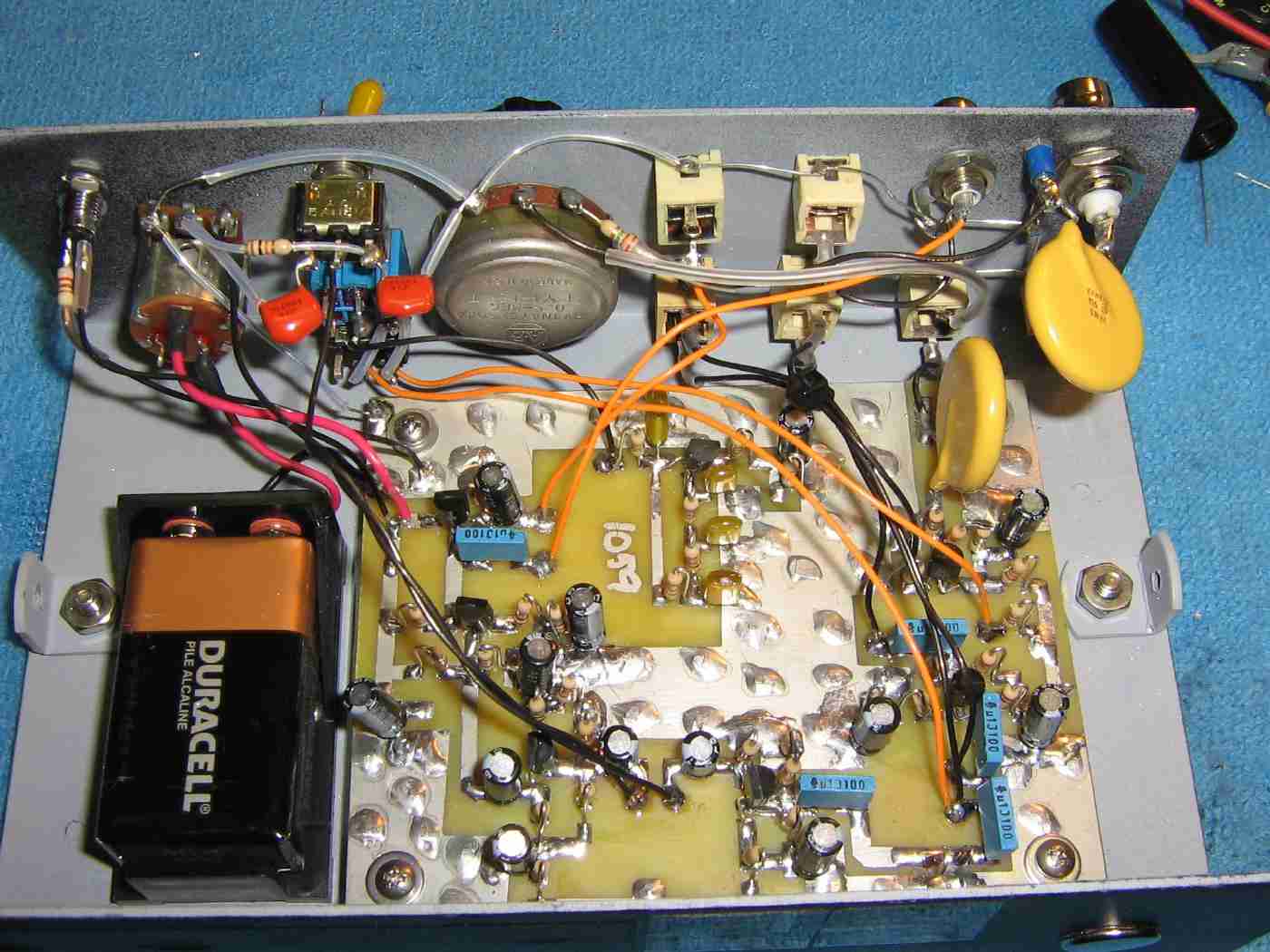
Mounting the circuit board in an old video switch box.
The only changes from the stock 1059 are the addition of a power-indicating LED, an extra RCA jack for the J5 output, and an extra BNC jack for the J1 input.
The 10k ohm Volume potentiometer also has a built in power switch.
The input/output jacks are standard panel-mount 1/8-inch switched jacks.
The circuit may look a little confusing at first, but just follow the schematic for each of the transistor "sections" in order to understand its full operation.
You can then break the circuit down into smaller parts which will aid in the understanding of their operation.
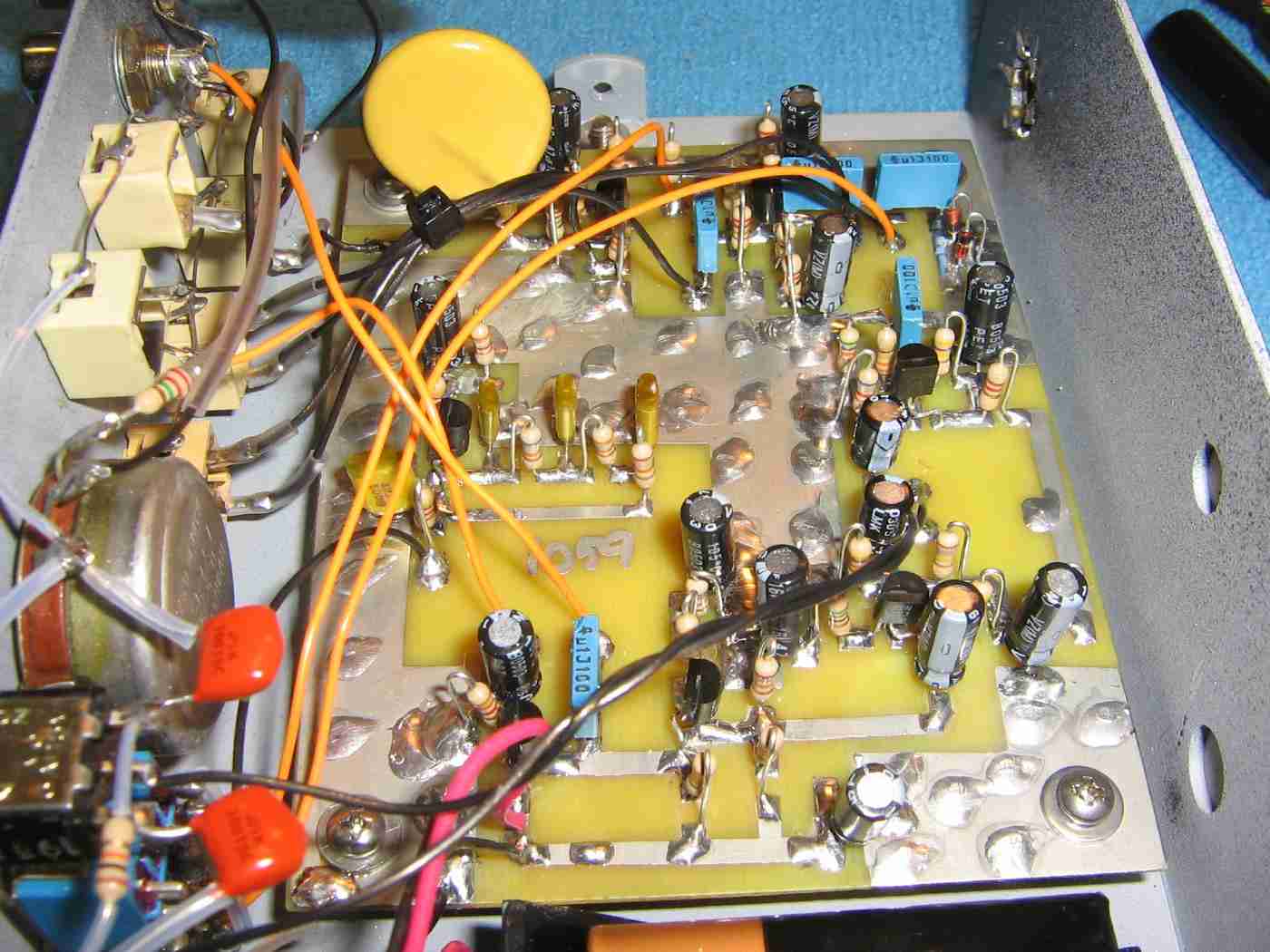
Alternate view.
Try to keep all the wiring as short as possible to prevent the circuit from oscillating.
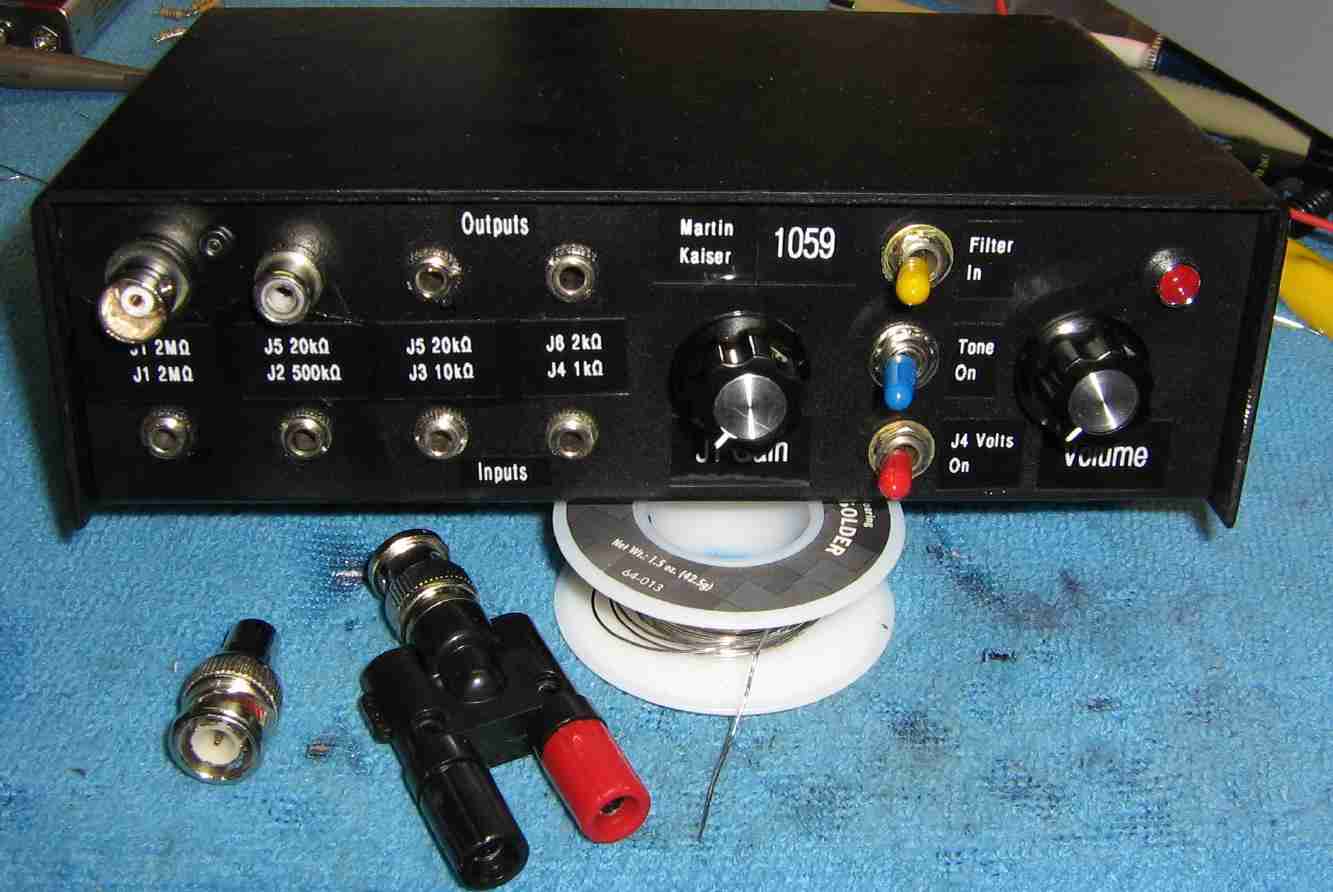
Outside case overview of the homemade Martin Kaiser 1059 Preamplifier.
The input 1/8-inch jacks are along the bottom. The output 1/8-inch jacks are along the top.
The BNC jack on the left is in parallel with the J1 input. Using a BNC jack allows the use of various adapters to connect to the inputs.
A RCA jack is in parallel with the J5 output. This is a "line level" output which can then be connected to other pieces of test equipment.
The switches flip to the right to enable their function.

Overview of a real Martin Kaiser 1059 Preamplifier.
Outside case overview showing the labeling.
The four inputs are along the top.
The two outputs are along the bottom.
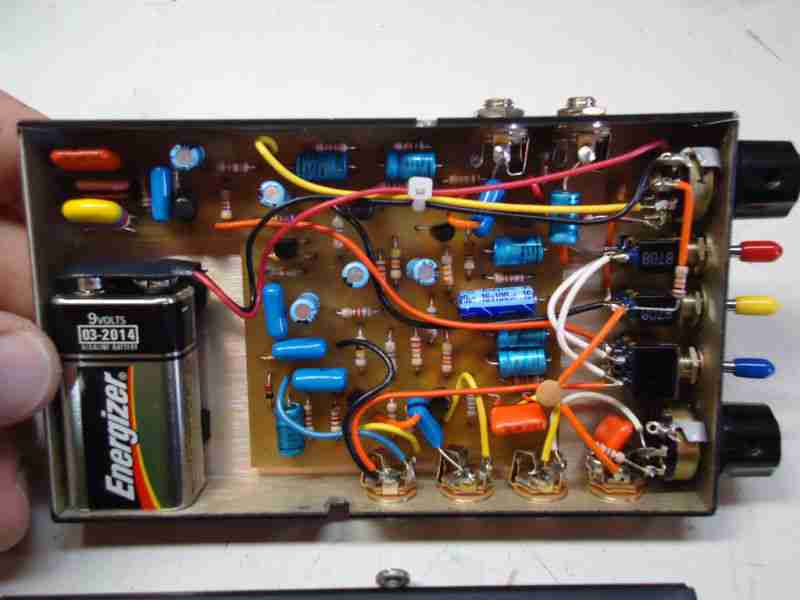
Internal overview of a real Martin Kaiser 1059 Preamplifier.
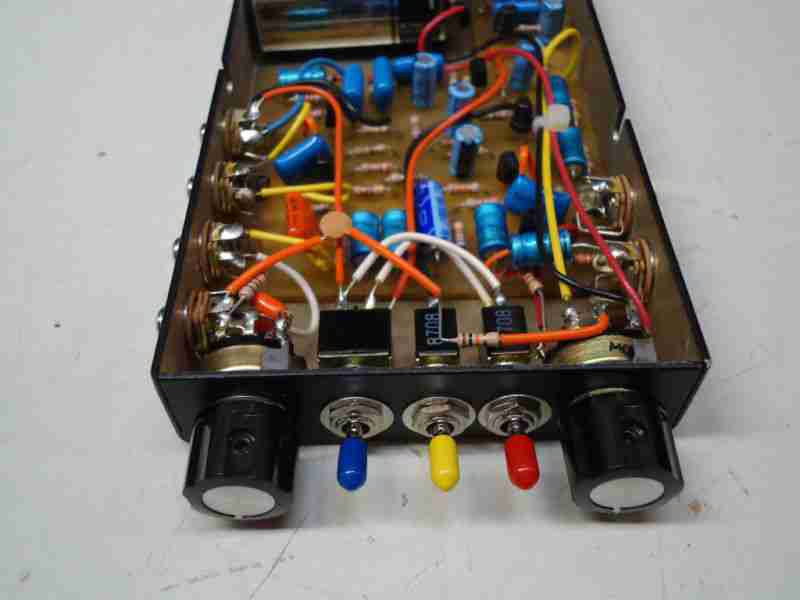
Alternate internal overview of a real Martin Kaiser 1059 Preamplifier.
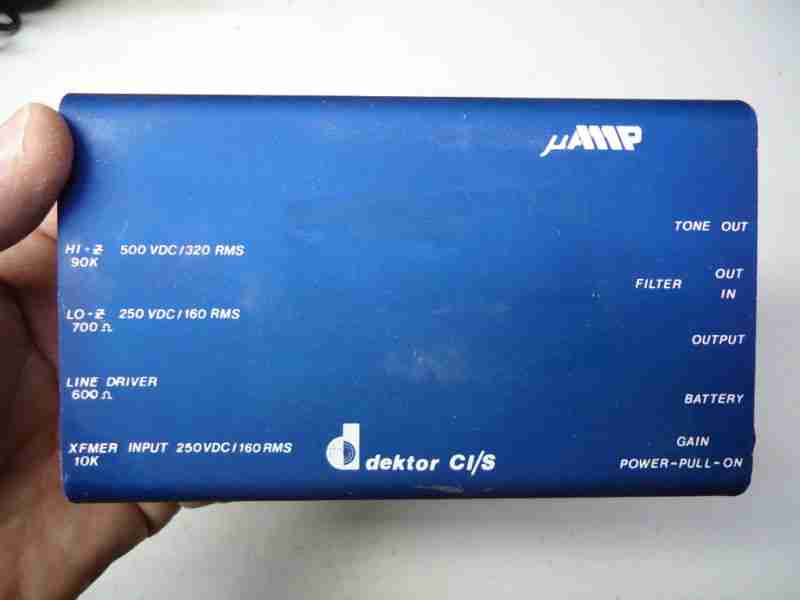
Overview of a Dektor Counterintelligence and Security Micro-Amp.
Look familar? LOL!
Allan Bell was a former Lieutenant Colonel in the U.S. Army's intelligence school and he worked alongside Marty Kaiser.
Bell formed Dektor Counterintelligence and Security, Inc. after retiring from the Army.
He sold mostly products which were knock-offs of Marty Kaiser's original TSCM equipment.
Today, Dektor is known for selling Psychological Stress Evaluators (PSE) and peddling in the pseudoscience of lie detection.
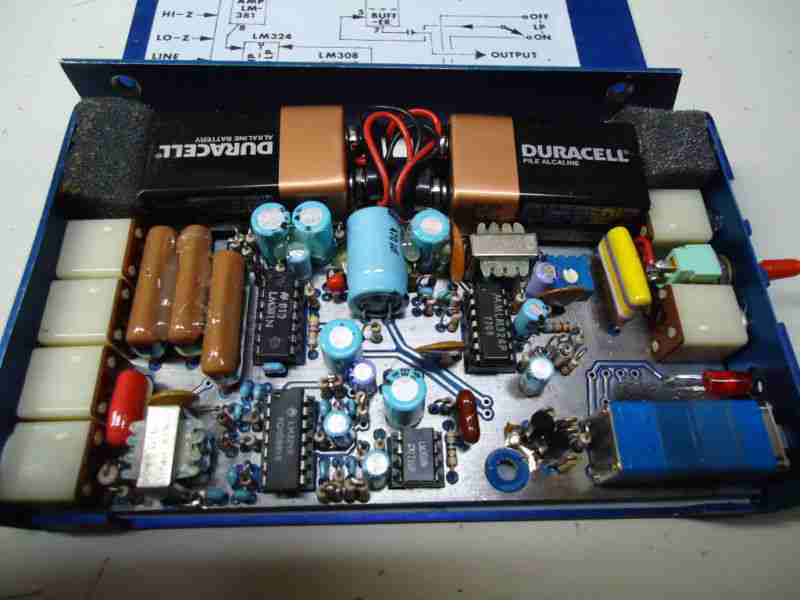
Internal overview of a Dektor Counterintelligence and Security Micro-Amp.










